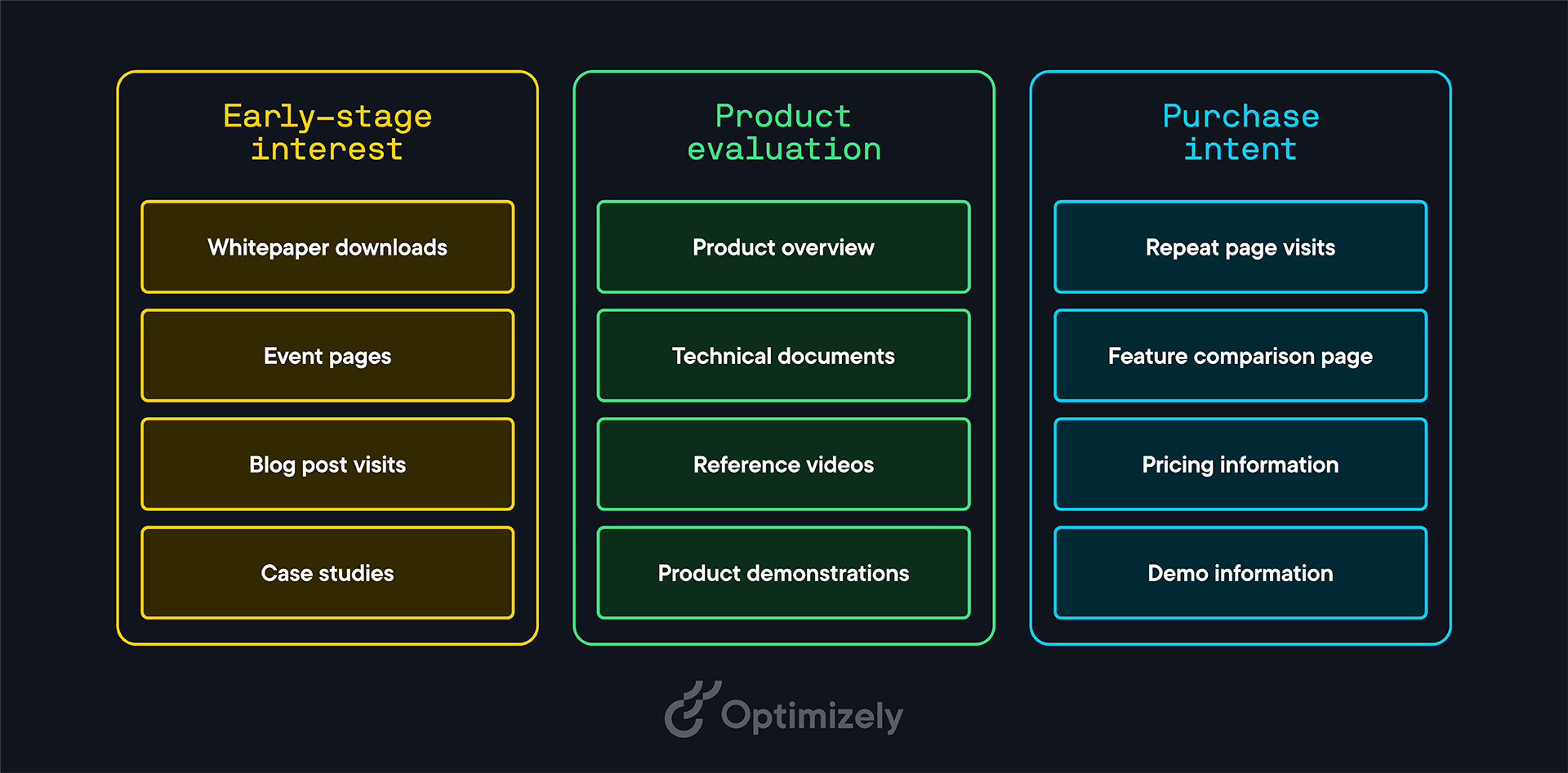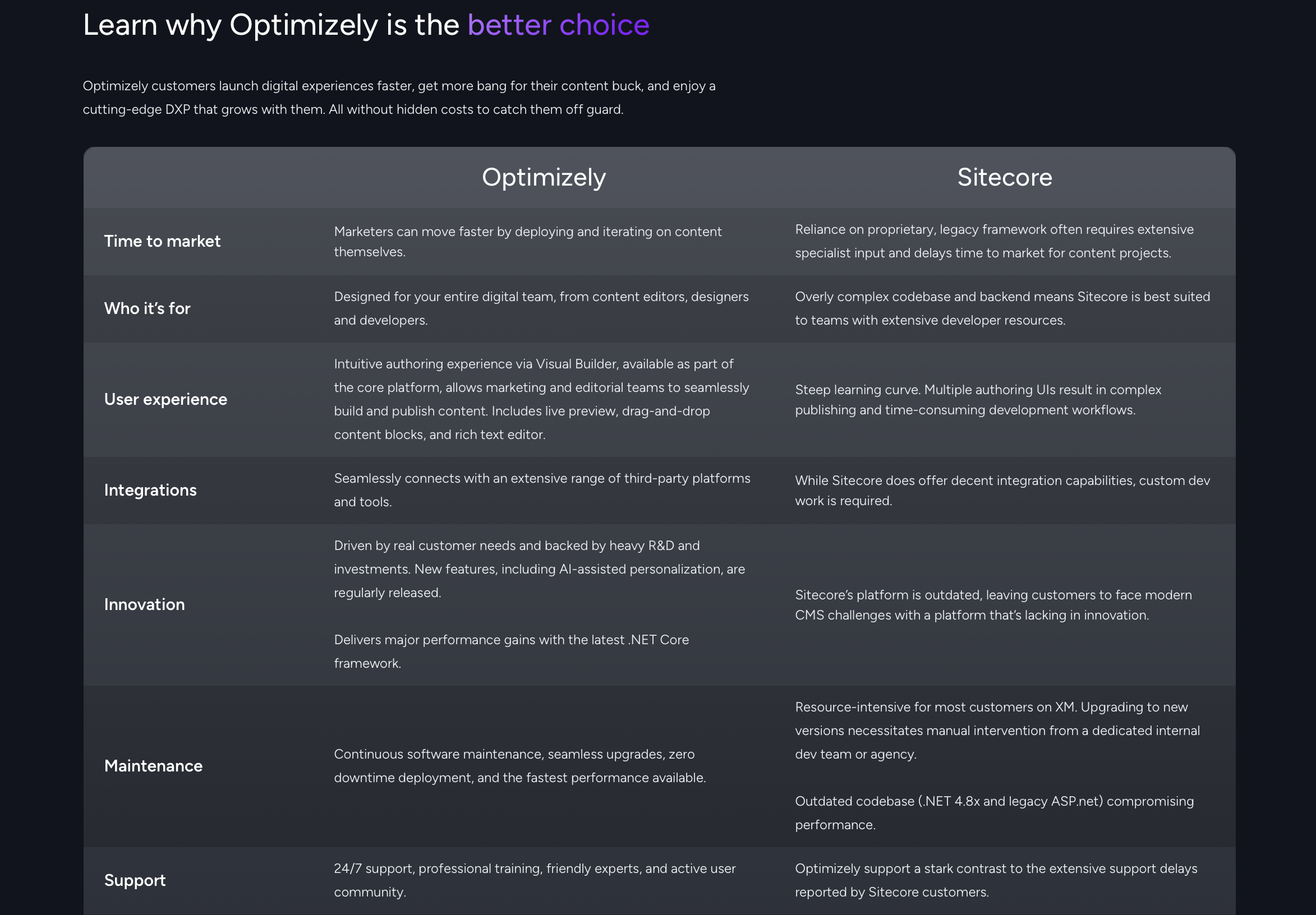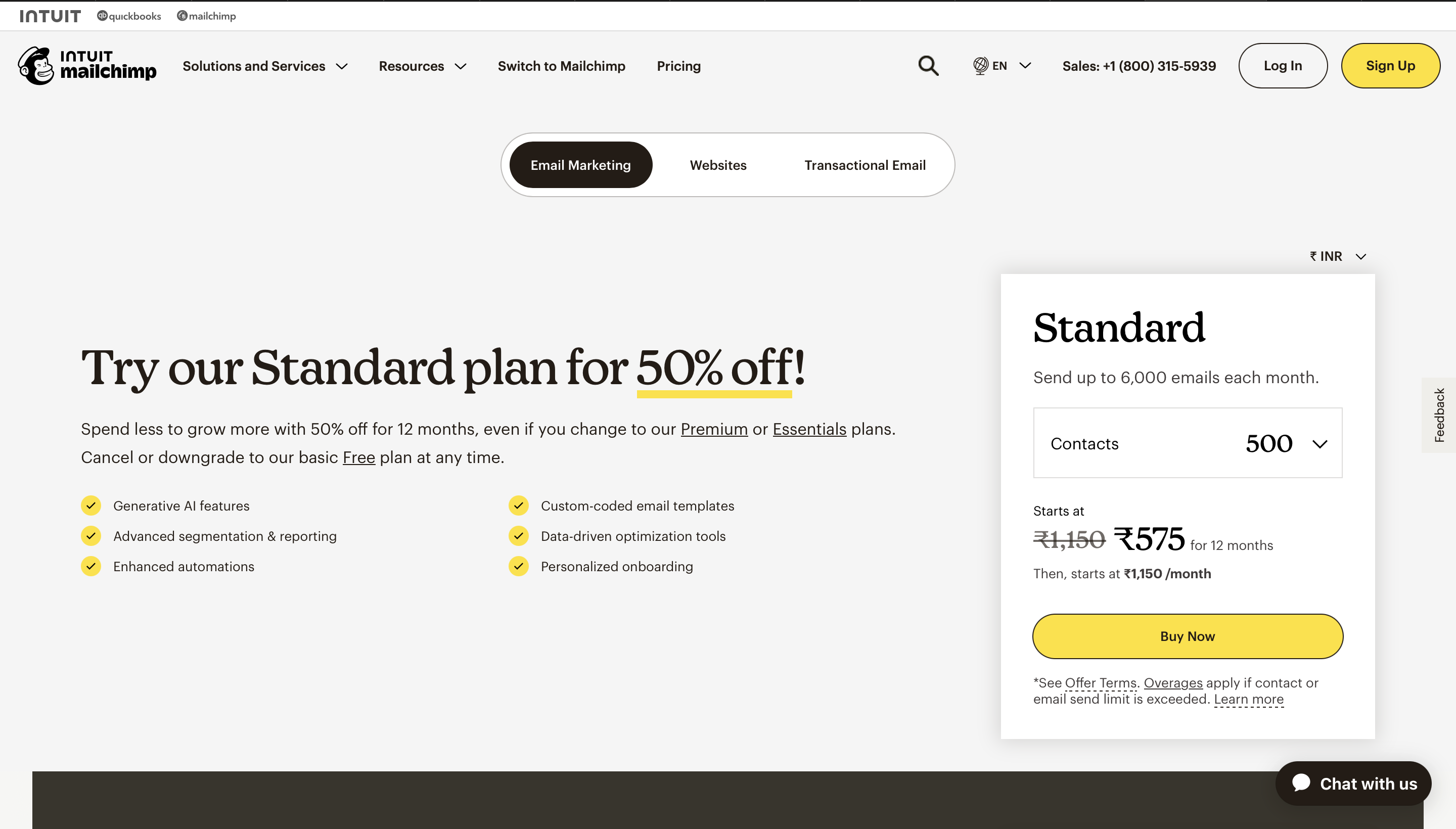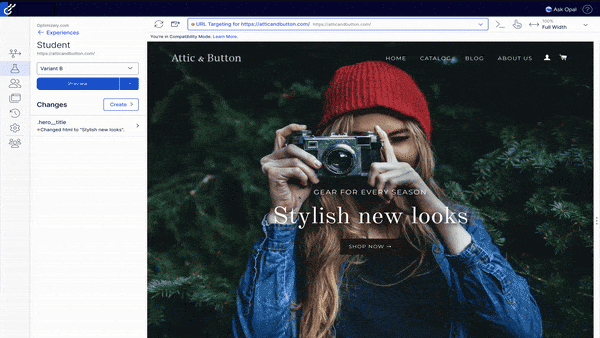Stellen Sie sich vor, Sie gehen in Ihr Lieblingscafé. Noch bevor Sie etwas sagen, begrüßt Sie der Barista mit Ihrem Namen und beginnt mit der Zubereitung Ihrer üblichen Bestellung. Das ist Personalisierung in Aktion. Der Barista verlässt sich auf Ihr bisheriges Kaufverhalten, um Ihnen das zu liefern, was Sie wünschen.
Es ist jedoch nicht einfach, diese Magie auch auf Ihre Digitalstrategie zu übertragen. Während 92% der Vermarkter auf First-Party-Daten setzen, um Wachstum zu erzielen, haben 63% immer noch Schwierigkeiten, personalisierte Erlebnisse effektiv zu liefern.
Das ist so, als hätten Sie die ganze Ausrüstung, um einen hervorragenden Kaffee zu kochen, aber keine Tassen oder Becher, um ihn zu servieren. In diesem Blog erfahren Sie, was Sie auf Ihrer Website beachten müssen, um personalisierte Erlebnisse zu schaffen.
Bringen Sie die Elemente Ihrer Website oder App in Ordnung
Um das perfekte personalisierte Erlebnis zu schaffen, müssen Sie wissen, welche Elemente Ihrer Website personalisiert werden können. Hier sind ein paar wichtige Elemente:
- Startseite: Ihr digitales Schaufenster kann sich je nach Standort des Benutzers, Empfehlungsquelle oder bisherigem Verhalten anpassen.
- Produktseiten: Passen Sie Beschreibungen, Bilder und verwandte Artikel auf der Grundlage des Browserverlaufs oder des Kaufverhaltens an. Quip hat die durchschnittliche Conversion gesteigert, indem es die Produktseiten personalisiert hat.
- Suchergebnisse: Passen Sie die Rankings auf der Grundlage von Benutzerpräferenzen oder früheren Interaktionen an.
- Content Recommendations: Schlagen Sie relevante Artikel, Videos oder Ressourcen vor, die mit den Interessen des Nutzers übereinstimmen.
- Call-to-Action-Schaltflächen: Ändern Sie den Text oder die Platzierung basierend auf der Absicht oder den Präferenzen des Benutzers.
- Formulare: Füllen Sie sie mit bekannten Informationen aus oder passen Sie die Felder je nach Benutzersegment an.
- Navigationsmenüs: Heben Sie Menüpunkte hervor oder ordnen Sie sie neu an, basierend auf dem Nutzerverhalten.
- Preisinformationen: Zeigen Sie personalisierte Angebote an oder heben Sie relevante Preisstufen hervor.
Ausgleich zwischen absichtsgesteuerten Erlebnissen und Persona-gesteuerten Erlebnissen
Es gibt zwar unendlich viele Signale, die Sie auf Ihrer Website verfolgen können, aber wir werden uns auf zwei Haupttypen konzentrieren: absichtsgesteuerte und persona-gesteuerte Erlebnisse.

Absichtsgesteuerte Signale: Was Ihre Benutzer tun
Diese Signale sind wie Brotkrümel, die Ihre Benutzer auf ihrer Customer Journey hinterlassen. Sie verraten Ihnen, wo sich Ihr Nutzer im Kaufprozess befindet:
Interesse im Anfangsstadium
- Signale: Herunterladen von Whitepapers, Besuch von Eventseiten, Lesen von Blogbeiträgen
- Aktion: Bieten Sie verwandte Inhalte an, um ihre Neugierde zu stillen.
Beispiel
Ein Besucher liest drei Blogbeiträge über Experimentieren. Sie könnten ihm ein kostenloses E-Book über"10 Erkenntnisse aus 127.000 Experimenten" anbieten.
Produktbewertung
- Signale: Besuch der Produktübersichtsseite, Ansehen von Demo-Videos
- Aktion: Bieten Sie detailliertere Produktinformationen, Vergleichsanleitungen
Beispiel
Wenn ein Benutzer Zeit auf Ihren Produktseiten verbringt, möchten Sie ihm vielleicht einen Seite-an-Seite-Vergleich zwischen Ihrem Produkt und dem der Konkurrenz anbieten.

Kaufabsicht
- Signale: Wiederholte Besuche auf Preisseiten, umfangreiche Funktionsvergleiche
- Aktion: Bieten Sie zeitlich begrenzte Angebote an, präsentieren Sie Erfahrungsberichte von Kunden
Beispiel
Ein Besucher hat Ihre Preisseite dreimal aufgerufen. Zeigen Sie einen zeitlich begrenzten Rabattcode an oder bieten Sie eine kostenlose Beratung an.

Persona-basierte Signale: Wer Ihre Benutzer sind
Hier geht es darum, wer Ihr Nutzer ist. Handelt es sich um einen technikbegeisterten Millennial oder um ein budgetbewusstes Elternteil? Wenn Sie dies verstehen, können Sie Ihre Botschaft entsprechend anpassen.
Beispiele für Persona-basierte Signale:
- Demografische Informationen (Alter, Wohnort, Berufsbezeichnung)
- Frühere Einkäufe
- Langfristige Browsing-Muster
- Festgelegte Präferenzen oder Kontoeinstellungen
Beispiel
Ein E-Commerce-Bekleidungshändler könnte verschiedene Personas erstellen, wie z.B:
- "Modebewusste Millennials": Junge Berufstätige zwischen 25 und 35 Jahren, die sich für trendige Styles interessieren
- "Umweltbewusste Shopper": Umweltbewusste Kunden, die nachhaltige Produkte bevorzugen
- "Budget-bewusste Eltern": Eltern, die nach langlebiger, erschwinglicher Kleidung für ihre heranwachsenden Kinder suchen
Für jede Persona könnte die Website unterschiedliche Produktkollektionen, Botschaften und Angebote präsentieren. Zum Beispiel:
- Modebewusste Millennials sehen die neuesten Trends und Kooperationen mit Influencern
- Umweltbewusste Shopper sehen einen prominenten Abschnitt "Nachhaltigkeit" und umweltfreundliche Produktplaketten
- Budgetbewusste Eltern sehen familienfreundliche Bilder, Mengenrabatte und mitwachsende Kleidungsoptionen
So begann unser Kunde SeaWorld Parks and Entertainment, basierend auf den Personas, Antworten auf Fragen wie "Haben jüngere Kinder freien Eintritt?" und "Wie kann ich einen geplanten Besuch verschieben oder stornieren?" anzuzeigen.
Das brachte mehr Leute dazu, den Checkout-Prozess abzuschließen.
Ein personalisiertes Erlebnis schaffen
Um die Besucher zum Kaufmoment zu führen, müssen Sie die Signale des Benutzerverhaltens erkennen und darauf reagieren, je nachdem, wo sie sich in der Buying Journey befinden, z. B. in der frühen Phase des Interesses, beim Produktvergleich oder bei der Kaufabsicht.
- Stufe 1: Entwerfen Sie ein einfaches Erlebnis, das durch ein einziges Auslösesignal ausgelöst wird. Zum Beispiel ein Pop-up mit einer Art kostenlosem Angebot, wenn jemand Ihre Preisseite besucht.
- Stufe 2: Erhöhen Sie das Erlebnis, indem Sie mehrere Datenauslöser miteinander kombinieren, um eine relevantere Reise anzubieten. Empfehlen Sie beispielsweise einem Nutzer, der Ihren Blog mehrfach besucht und ein Whitepaper heruntergeladen hat, erweiterte Inhalte.
- Stufe 3: Kombinieren Sie mehrere Datenauslöser, um ein vollständiges, umfassendes Erlebnis zu schaffen. Ein wiederkehrender Kunde sieht beispielsweise eine auf seine Branche zugeschnittene Homepage mit personalisierten Produktempfehlungen und Treueangeboten.
Wenn Sie sich Sorgen über Ressourcenbeschränkungen machen, sollte das Ihre Personalisierungsbemühungen nicht einschränken. No-Code- oder Low-Code-Lösungen bieten die Flexibilität, sich ohne große Entwicklungsressourcen an die sich verändernden Bedürfnisse Ihrer Kunden anzupassen.
Visual Experience Builder bieten eine Echtzeitvorschau, so dass Sie die Änderungen so sehen können, wie Ihre Kunden sie auf der Live Site sehen würden, was den Personalisierungsprozess vereinfacht.

Aber es ist doch nur eine Anpassung..."
Ist es nicht.
Personalisierung ist nur dann Personalisierung, wenn Sie sie ohne Experimentieren umsetzen. Um Erlebnisse wirklich maßzuschneidern, müssen Sie ständig experimentieren, lernen und optimieren.
Experimentieren ist nicht nur eine nette Dreingabe, sondern unerlässlich, um den ROI nachzuweisen und die Fallstricke der Personalisierung zu vermeiden. Personalisieren Sie nicht einfach nur. Personalisieren Sie mit Beweisen.
Ein personalisiertes Erlebnis bieten
Sobald Sie die Puzzleteile zusammengesetzt haben, ist es an der Zeit, personalisierte Erlebnisse für die richtigen Leute zum richtigen Zeitpunkt zu liefern.
- Segmentierung in Echtzeit
Jetzt ist es an der Zeit, Ihre Pläne in die Tat umzusetzen. Wenn ein Besucher auf die Schaltfläche "Mehr erfahren" klickt, bietet Ihre Site dann relevante, personalisierte Inhalte an, oder reagiert sie nicht angemessen? - KI-gestützte Bereitstellung
KI identifiziert Muster und liefert personalisierte Inhalte mit bemerkenswerter Geschwindigkeit und Effizienz. Sie optimiert kontinuierlich die Leistung Ihrer Site und wählt automatisch die effektivsten Varianten aus. - Symmetrische Erlebnisse
Ihre Kunden nutzen mehrere Geräte und Plattformen, um sich über Ihre Marke zu informieren und bei Ihnen zu kaufen. Ihre Herausforderung besteht darin, ein symmetrisches Erlebnis zu bieten, unabhängig davon, wie sie mit Ihrer Marke kommunizieren. Unabhängig davon, ob sie auf einem Mobiltelefon oder einem Desktop-Computer surfen, sollte Ihr personalisiertes Erlebnis konsistent und nahtlos bleiben.
Beispiel
Ein Kunde beginnt auf seinem Mobiltelefon mit der Recherche nach einem Urlaubspaket, während er unterwegs ist. Wenn er sich später mit seinem Desktop-Computer einloggt, merkt sich die Reise-Website seine Suchpräferenzen und präsentiert ihm maßgeschneiderte Empfehlungen, so dass ein nahtloses geräteübergreifendes Erlebnis entsteht.
Und schließlich ist es bei der Bereitstellung personalisierter Erlebnisse entscheidend, die Datenerfassung und -verwendung transparent zu gestalten, um Personalisierung und Datenschutzbestimmungen effektiv zu handhaben.
Zusammenfassend...
Bei der Schaffung personalisierter Erlebnisse auf Ihrer Website oder in Ihrer App geht es nicht nur darum, die auf Buzzwords versessenen Führungskräfte zu besänftigen - es geht darum, Ihre Nutzer zu verstehen und bei jeder Interaktion einen Mehrwert zu bieten. Fangen Sie klein an, experimentieren Sie oft, und verfeinern Sie Ihren Ansatz immer wieder.
Denken Sie daran, dass es darauf ankommt, sowohl die Absichtsdaten als auch die Persona-Daten in Einklang zu bringen:
- Absichtsdaten geben Aufschluss darüber, was ein Benutzer gerade möchte.
- Persona-Daten helfen Ihnen zu verstehen, wer der Benutzer in einem breiteren Kontext ist.
Ehe Sie sich versehen, werden Sie personalisierte Erlebnisse anbieten, die Ihre Kunden dazu bringen, immer wieder zu kommen.
- Zuletzt geändert: 06.02.2025 17:44:17
